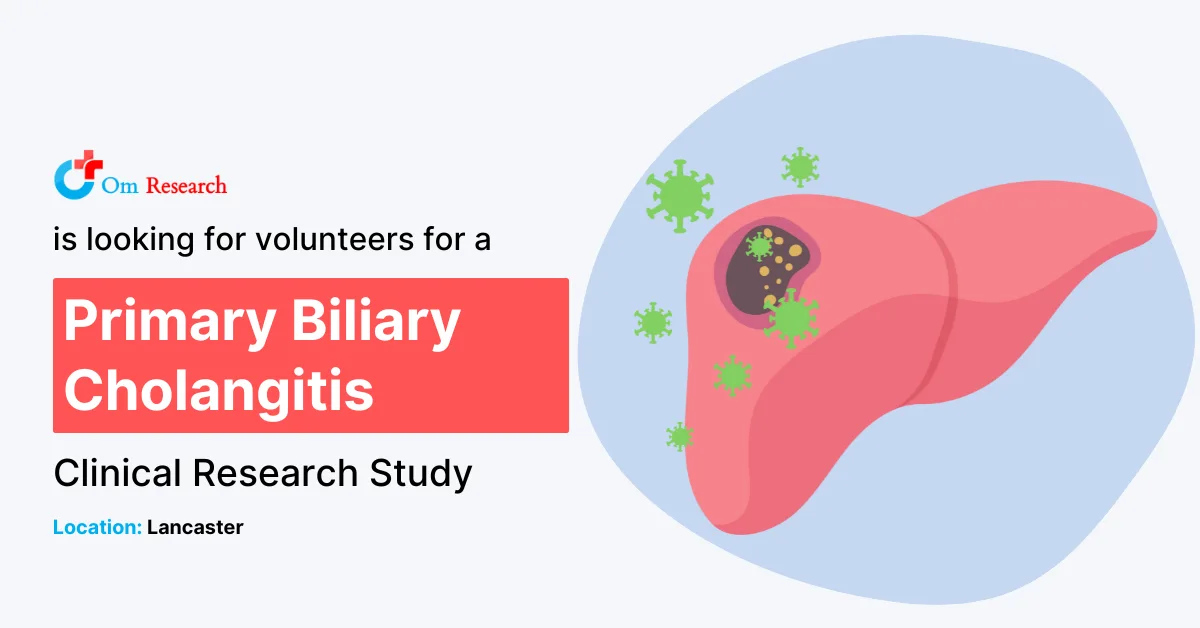Primary Biliary Cholangitis – Lancaster
Primary Biliary Cholangitis - Lancaster
- No insurance required.
- Reimbursement may be available for time and travel.

- Sex: Male, Female
- Age: Adult (18+)
- Compensation (Up to): $2000
- Location: Lancaster
Primary biliary cholangitis (PBC), previously known as primary biliary cirrhosis, is an autoimmune disease that affects the liver. Here are the key points:
Bile Duct Damage:
- PBC causes inflammation and gradual destruction of the small bile ducts in the liver.
- Bile ducts play a crucial role in digestion, vitamin absorption, and cholesterol elimination.
- Ongoing inflammation can lead to bile duct damage and permanent scarring (cirrhosis).
Symptoms:
- Early symptoms (often asymptomatic):
- Fatigue.
- Itchy skin.
- Later symptoms:
- Yellowing of skin and eyes (jaundice).
- Dry eyes and mouth.
- Pain in the upper right abdomen.
- Swollen spleen (splenomegaly).
- Bone, muscle, or joint pain.
- Swollen feet and ankles.
- Ascites (fluid buildup in the abdomen).
- Xanthomas (fatty deposits around eyes, eyelids, or joints).
- Hyperpigmentation (darkening of skin).
- Osteoporosis (brittle bones).
- High cholesterol.
- Steatorrhea (diarrhea with greasy stools).
- Hypothyroidism.
- Weight loss.
Causes:
- Autoimmune Disease:
- The immune system mistakenly attacks healthy bile duct cells.
- Genetic and environmental factors likely contribute.
- Liver Inflammation:
- White blood cells (T cells) accumulate in the liver, damaging bile ducts.
If you’re interested in volunteering for the study, or would like more information, please fill out the volunteer form or call us at 855-75-TRIALS.